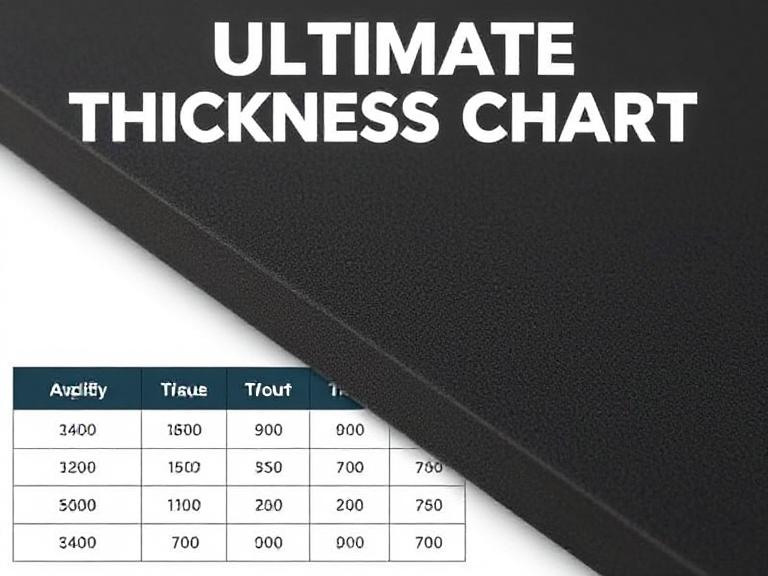Ultimate Thickness Chart & Guide for EVA Foam
2025-06-23
Table of Contents
- Introduction to EVA Foam
- EVA Foam Thickness Chart
- Choosing the Right Thickness
- Fubo Foam Manufacturer Overview
- Common Applications by Thickness
- Tips for Working with EVA Foam
- Conclusion
- Summary Table
Introduction to EVA Foam

EVA (Ethylene Vinyl Acetate) foam is a versatile and popular material used across many industries. Its excellent cushioning, shock absorption, water resistance, and flexibility make it ideal for applications ranging from sports gear to packaging. This guide explains how thickness affects performance and helps you choose the best EVA foam for your needs.
EVA Foam Thickness Chart
Here is a typical chart showing common EVA foam thicknesses and their characteristics:
| Thickness (mm / in) | Characteristics | Typical Usage |
|---|---|---|
| 1 mm (~0.04″) | Very thin, flexible, lightweight | Crafting, shoe insole linings |
| 2–3 mm (~0.08″–0.12″) | Slightly stiffer, easy to cut | Cosplay, light padding, arts & crafts |
| 5 mm (~0.20″) | Balanced flexibility and structure | Yoga mats, phone cases, protective pads |
| 10 mm (~0.40″) | Structured, good cushioning | Floor underlayment, sports mats |
| 15 mm (~0.60″) | Thick, provides strong shock absorption | Heavy-duty mats, packaging, protective inserts |
| 20 mm+ (≥0.8″) | Very thick, durable structural use | Traffic control mats, industrial padding |
Choosing the Right Thickness
You should consider these factors when selecting EVA foam:
- Compression & cushioning: Thicker foam = more shock absorption.
- Flexibility: Thinner sheets bend and shape easier.
- Durability: Thicker options withstand wear better.
- Weight constraints: Thinner is lighter but less protective.
- Cutting & fabrication: Thinner material is easier to work with hand tools; thicker may need machines.
- Cost: Thickness increases price; match to actual needs.
Fubo Foam Manufacturer Overview
Fubo is a professional EVA foam manufacturer based in Xiegang, Dongguan, China. They specialize in supplying high-quality foam for:
- Electronics packaging and appliances
- Hardware protection and sports equipment
- Vacuum cleaners, drones, and LED modules
- New energy & semiconductor buffering
Fubo offers flexible OEM solutions, including fast prototyping (1–3 days) and 7–10 day delivery for bulk orders. Their products include customized inner linings, swimming boards, EVA toys, protective materials, and soilless culture boards.
Common Applications by Thickness
1 mm
- Shoe liners
- Thin gaskets for electronics
- Cancraft lightweight padding
2–3 mm
- Cosplay armor and accessories
- Phone & tablet cases
- Helmet inner liners
5 mm
- Yoga mats and exercise tiles
- Camera bags and drone casing
- Sports knee/elbow pads
10 mm
- Playground flooring
- Floor underlayment
- Protective equipment inserts
15 mm
- Shipping cases for electronics
- Industrial protective mats
- Amusement park ride padding
20 mm+
- Crash matting, traffic control zones
- Heavy machinery cushioning
- Warehouse floor protection
Tips for Working with EVA Foam
- Cut with sharp blades: Replace often for clean edges.
- Heat shaping: Heating allows bending and welding edges.
- Adhesives: Use contact cement or hot glue for long-lasting seams.
- Sealing edges: Apply sealant or PVC tape to prevent delamination.
- Cleaning: Wipe with mild soap and avoid solvents.
- Storage: Store flat and avoid UV exposure for longevity.
Conclusion
Picking the right EVA foam thickness hinges on understanding your application's need for cushioning, flexibility, and durability. Whether you’re crafting phone cases or designing industrial mats, thickness selection is crucial. With Fubo’s extensive product portfolio and fast turnaround, sourcing tailored EVA foam solutions has never been easier.
Summary Table
| Thickness | Key Feature | Typical Use |
|---|---|---|
| 1 mm | Light, flexible | Shoe liners, crafts |
| 2–3 mm | Easy to shape | Cosplay, cases |
| 5 mm | Balanced padding | Mats, padding |
| 10 mm | Structured cushioning | Flooring, protective inserts |
| 15 mm | High shock absorption | Shipping, industrial |
| 20 mm+ | Very durable | Crash mats, heavy-duty mats |
